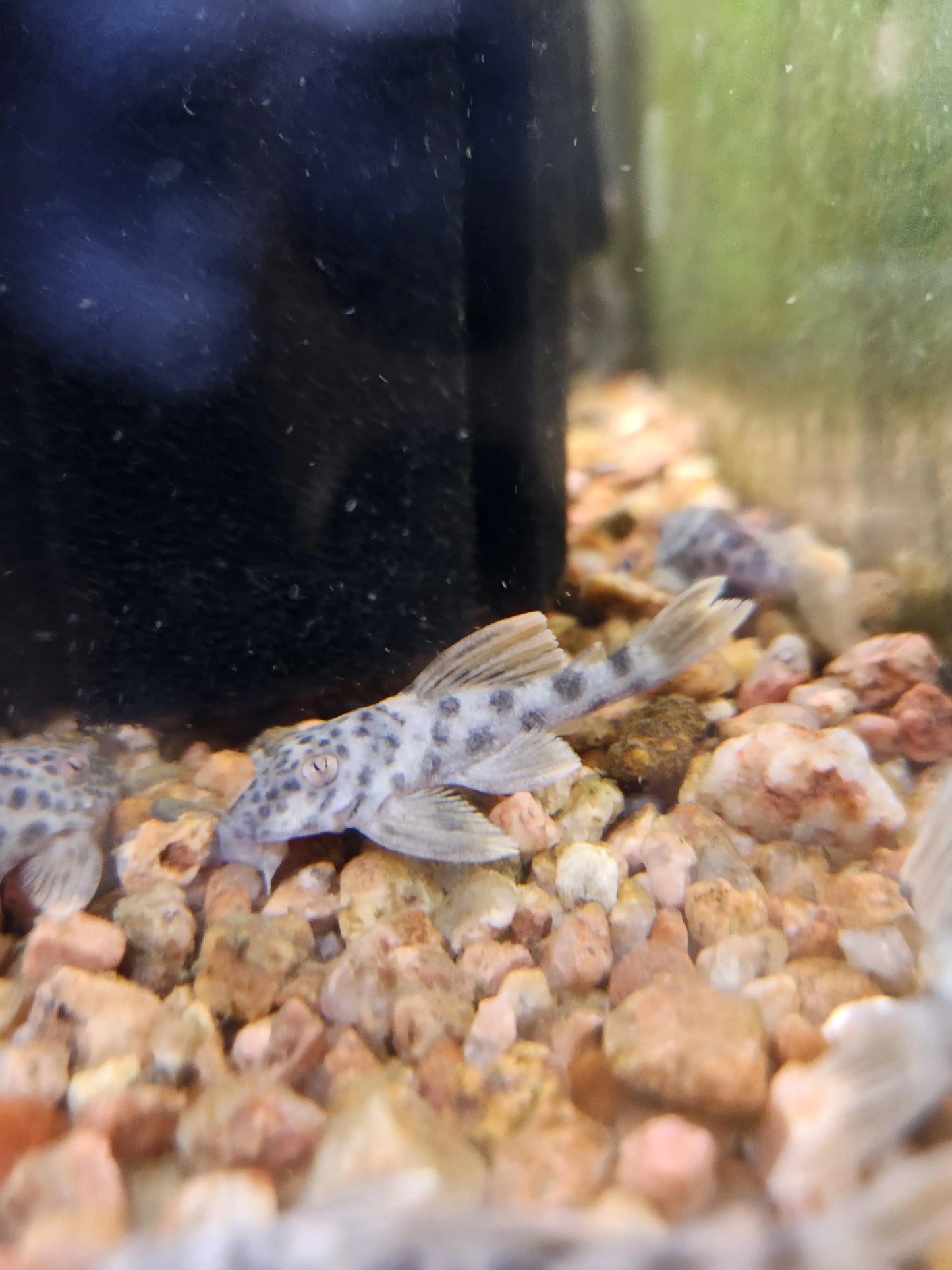Ancistomus feldbergae – Rare Medium-Sized L-Number Pleco
Ancistomus feldbergae – Rare Medium-Sized L-Number Pleco
Out of stock
Couldn't load pickup availability
🪵 Ancistomus feldbergae – Rare Medium-Sized L-Number Pleco
Ancistomus feldbergae is a beautiful and rare L-number pleco appreciated for its distinct spotted pattern, armored body, and peaceful temperament. Native to fast-flowing South American waters, this species thrives in warm, clean, well-oxygenated aquariums with driftwood and rocky hiding places.
With its striking coloration and moderate adult size, A. feldbergae is perfect for aquarists looking for a unique display pleco that isn’t overly aggressive and doesn’t outgrow a typical aquarium.
🌟 Key Features
🖤 Dark Body with Pale Spots – Attractive high-contrast patterning
🐠 Medium-Sized Pleco – Typically 6–8 inches as an adult
🌿 Peaceful & Community-Friendly – Works well with mild tankmates
🪵 Loves Driftwood & Caves – Essential for comfort and territory
✨ Rare in the Hobby – Great addition for pleco collectors
⚙️ Care Guide
- Scientific Name: Ancistomus feldbergae
- Common Name: Feldbergae Pleco
- Temperament: Peaceful to mildly territorial
- Adult Size: 6–8 inches
- Diet: Omnivore – algae wafers, sinking pellets, shrimp, bloodworms, veggies
- Tank Size: 55 gallons minimum
- Water Temperature: 78–84°F
- pH Range: 6.2–7.5
- Lifespan: 8–12 years
💡 Tank Setup Tips
- Provide multiple caves, rock crevices, and driftwood.
- Strong filtration and high oxygenation are important.
- Sand or smooth gravel substrate protects barbels.
- Compatible tankmates: Severums, Geophagus, peaceful cichlids, large tetras, rainbows.
- Avoid keeping with highly aggressive plecos.
❓ FAQ
Q: Is Ancistomus feldbergae aggressive?
A: Generally peaceful—may defend a preferred cave against other plecos.
Q: Does it eat algae?
A: Some—supplement with wafers, veggies, and protein foods.
Q: How big do they get?
A: Usually 6–8 inches, depending on lineage.
Q: Is it good for planted tanks?
A: Yes—safe with plants and does not dig heavily.



